2009 TOYOTA TUNDRA cooling
[x] Cancel search: coolingPage 285 of 672
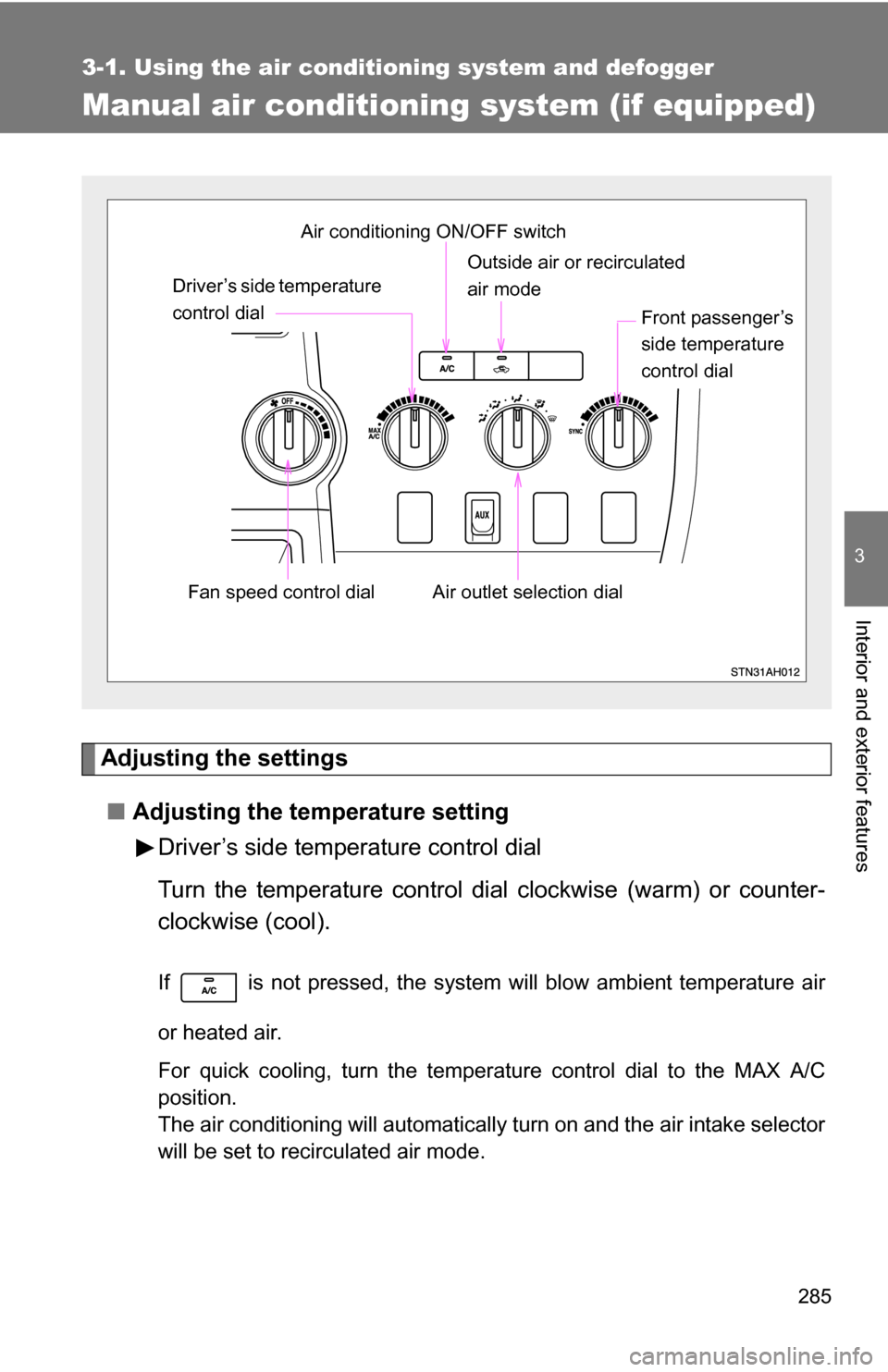
285
3-1. Using the air conditioning system and defogger
3
Interior and exterior features
Manual air conditioning system (if equipped)
Adjusting the settings■ Adjusting the temperature setting
Driver’s side temperature control dial
Turn the temperature control dial clockwise (warm) or counter-
clockwise (cool).
If is not pressed, the system will blow ambient temperature air
or heated air.
For quick cooling, turn the temperature control dial to the MAX A/C
position.
The air conditioning will automatically turn on and the air intake selector
will be set to recirculated air mode.
Outside air or recirculated
air mode
Air outlet selection dial
Air conditioning ON/OFF switch
Driver’s side temperature
control dial
Fan speed control dial
Front passenger’s
side temperature
control dial
Page 473 of 672
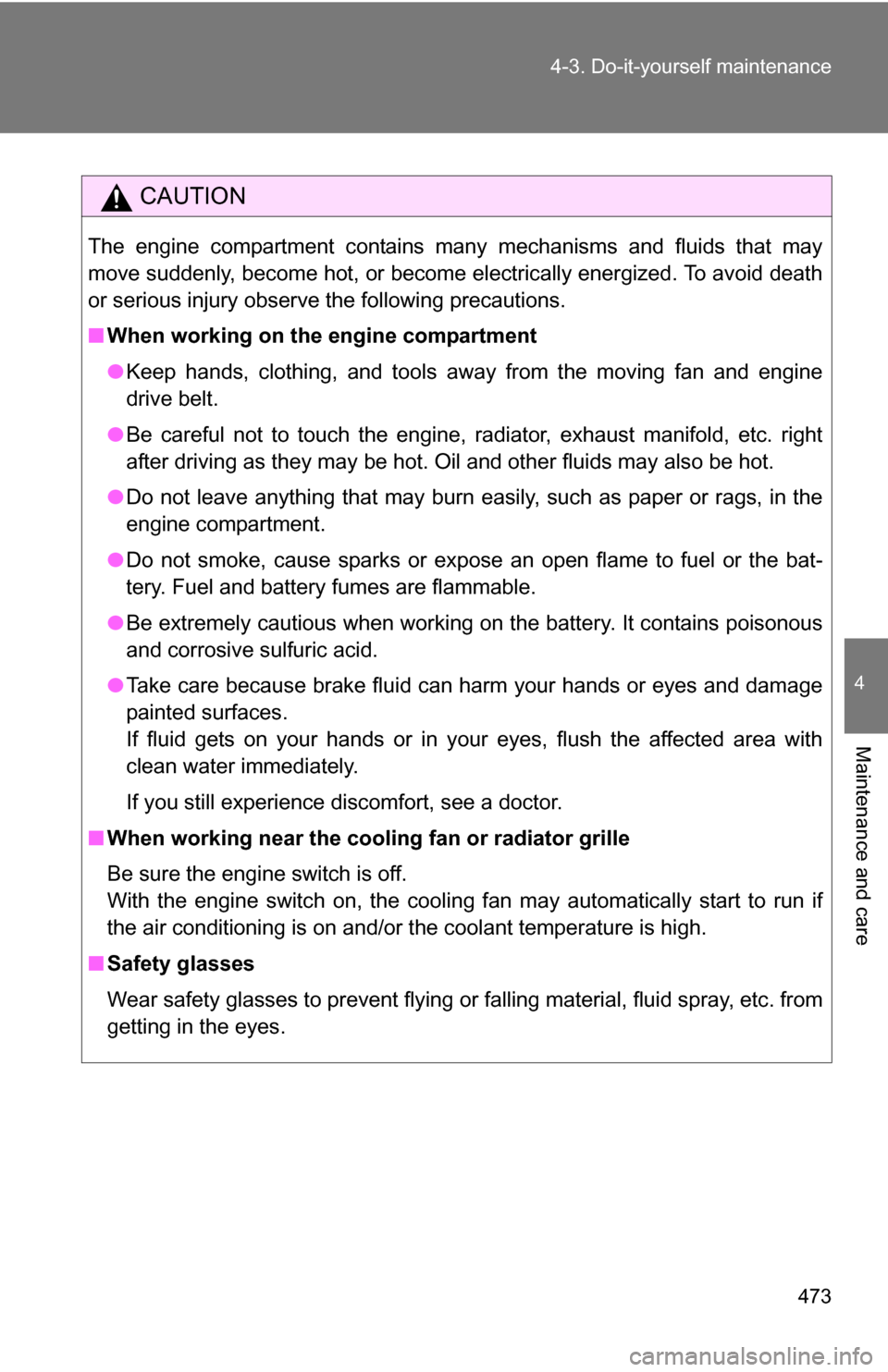
473
4-3. Do-it-yourself maintenance
4
Maintenance and care
CAUTION
The engine compartment contains many mechanisms and fluids that may
move suddenly, become hot, or become electrically energized. To avoid death
or serious injury observe the following precautions.
■
When working on the engine compartment
●Keep hands, clothing, and tools away from the moving fan and engine
drive belt.
● Be careful not to touch the engine, radiator, exhaust manifold, etc. right
after driving as they may be hot. Oil and other fluids may also be hot.
● Do not leave anything that may burn easily, such as paper or rags, in the
engine compartment.
● Do not smoke, cause sparks or expose an open flame to fuel or the bat-
tery. Fuel and battery fumes are flammable.
● Be extremely cautious when working on the battery. It contains poisonous
and corrosive sulfuric acid.
● Take care because brake fluid can harm your hands or eyes and damage
painted surfaces.
If fluid gets on your hands or in your eyes, flush the affected area with
clean water immediately.
If you still experience discomfort, see a doctor.
■ When working near the cooling fan or radiator grille
Be sure the engine switch is off.
With the engine switch on, the cooling fan may automatically start to run if
the air conditioning is on and/or the coolant temperature is high.
■ Safety glasses
Wear safety glasses to prevent flying or falling material, fluid spray, etc. from
getting in the eyes.
Page 484 of 672
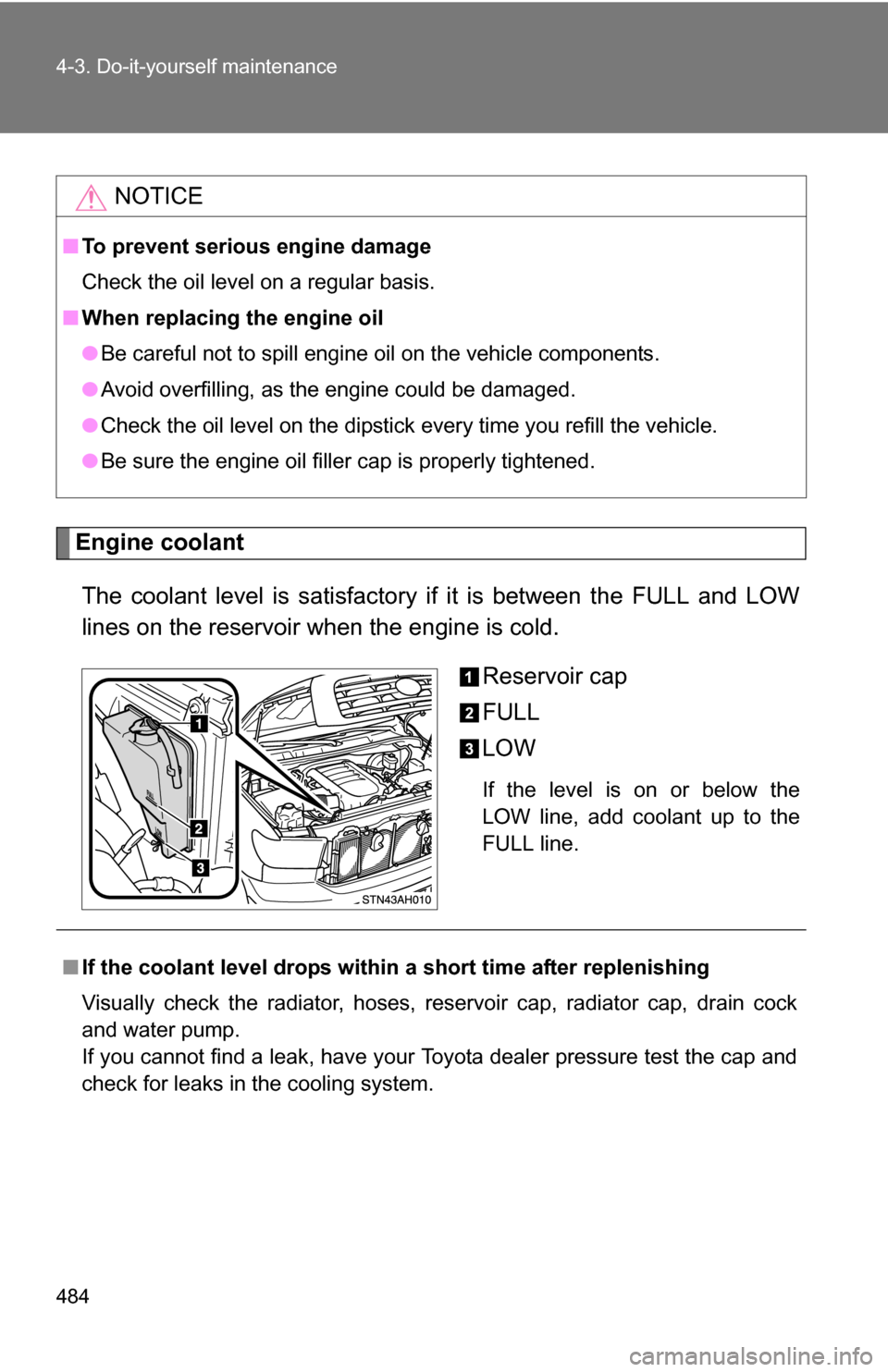
484 4-3. Do-it-yourself maintenance
Engine coolantThe coolant level is satisfactory if it is between the FULL and LOW
lines on the reservoir when the engine is cold. Reservoir cap
FULL
LOW
If the level is on or below the
LOW line, add coolant up to the
FULL line.
NOTICE
■To prevent serious engine damage
Check the oil level on a regular basis.
■ When replacing the engine oil
●Be careful not to spill engine oil on the vehicle components.
● Avoid overfilling, as the engine could be damaged.
● Check the oil level on the dipstick every time you refill the vehicle.
● Be sure the engine oil filler cap is properly tightened.
■If the coolant level drops within a short time after replenishing
Visually check the radiator, hoses, reservoir cap, radiator cap, drain cock
and water pump.
If you cannot find a leak, have your Toyota dealer pressure test the cap and
check for leaks in the cooling system.
Page 485 of 672
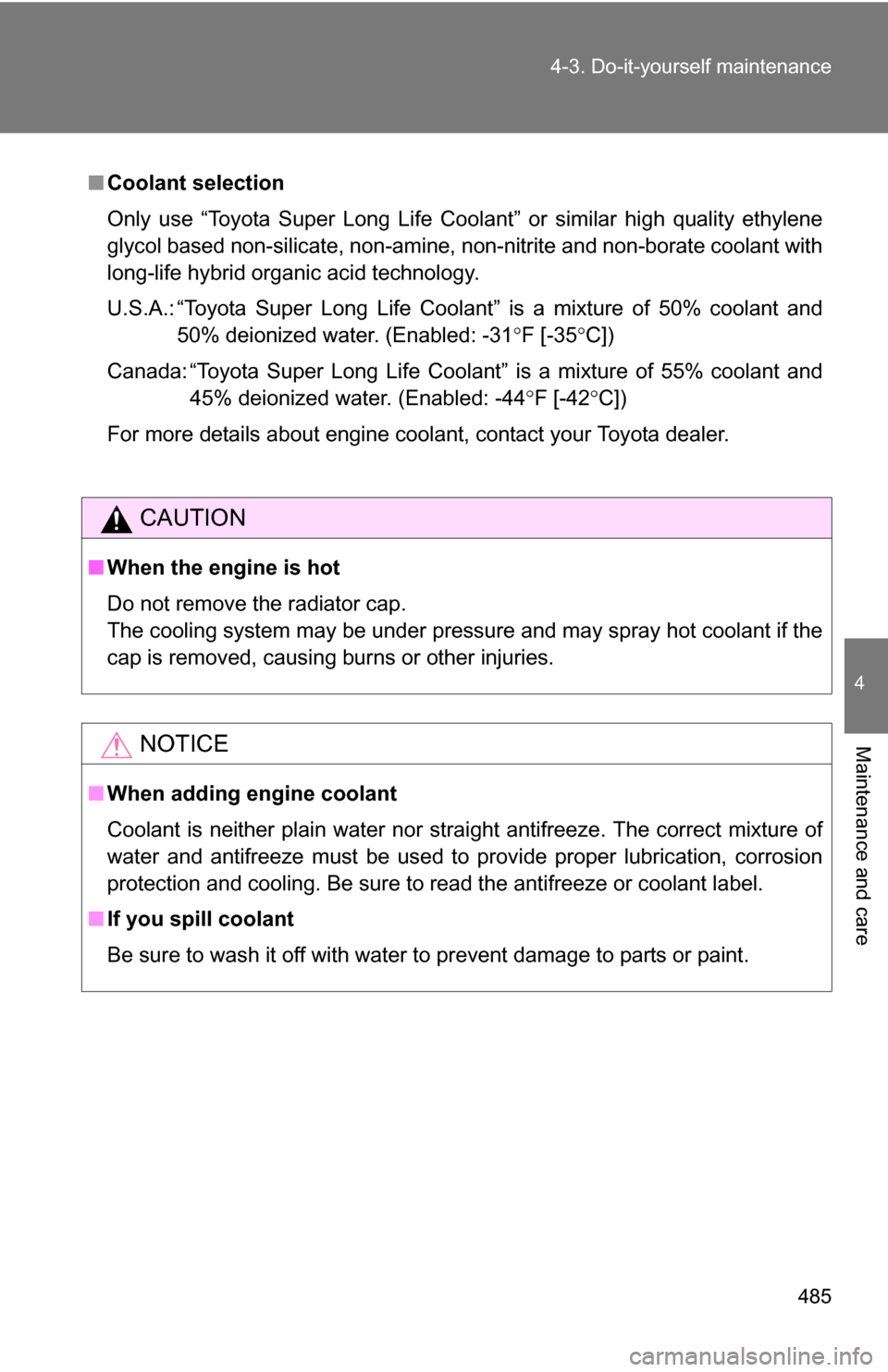
485
4-3. Do-it-yourself maintenance
4
Maintenance and care
■
Coolant selection
Only use “Toyota Super Long Life Coolant” or similar high quality ethylene
glycol based non-silicate, non-amine, non-nitrite and non-borate coolant with
long-life hybrid organic acid technology.
U.S.A.: “Toyota Super Long Life Coolant” is a mixture of 50% coolant and 50% deionized water. (Enabled: -31 F [-35 C])
Canada: “Toyota Super Long Life Coolant” is a mixture of 55% coolant and 45% deionized water. (Enabled: -44 F [-42 C])
For more details about engine coolant, contact your Toyota dealer.
CAUTION
■ When the engine is hot
Do not remove the radiator cap.
The cooling system may be under pressure and may spray hot coolant if the
cap is removed, causing burns or other injuries.
NOTICE
■When adding engine coolant
Coolant is neither plain water nor stra ight antifreeze. The correct mixture of
water and antifreeze must be used to provide proper lubrication, corrosion
protection and cooling. Be sure to read the antifreeze or coolant label.
■ If you spill coolant
Be sure to wash it off with water to prevent damage to parts or paint.
Page 584 of 672
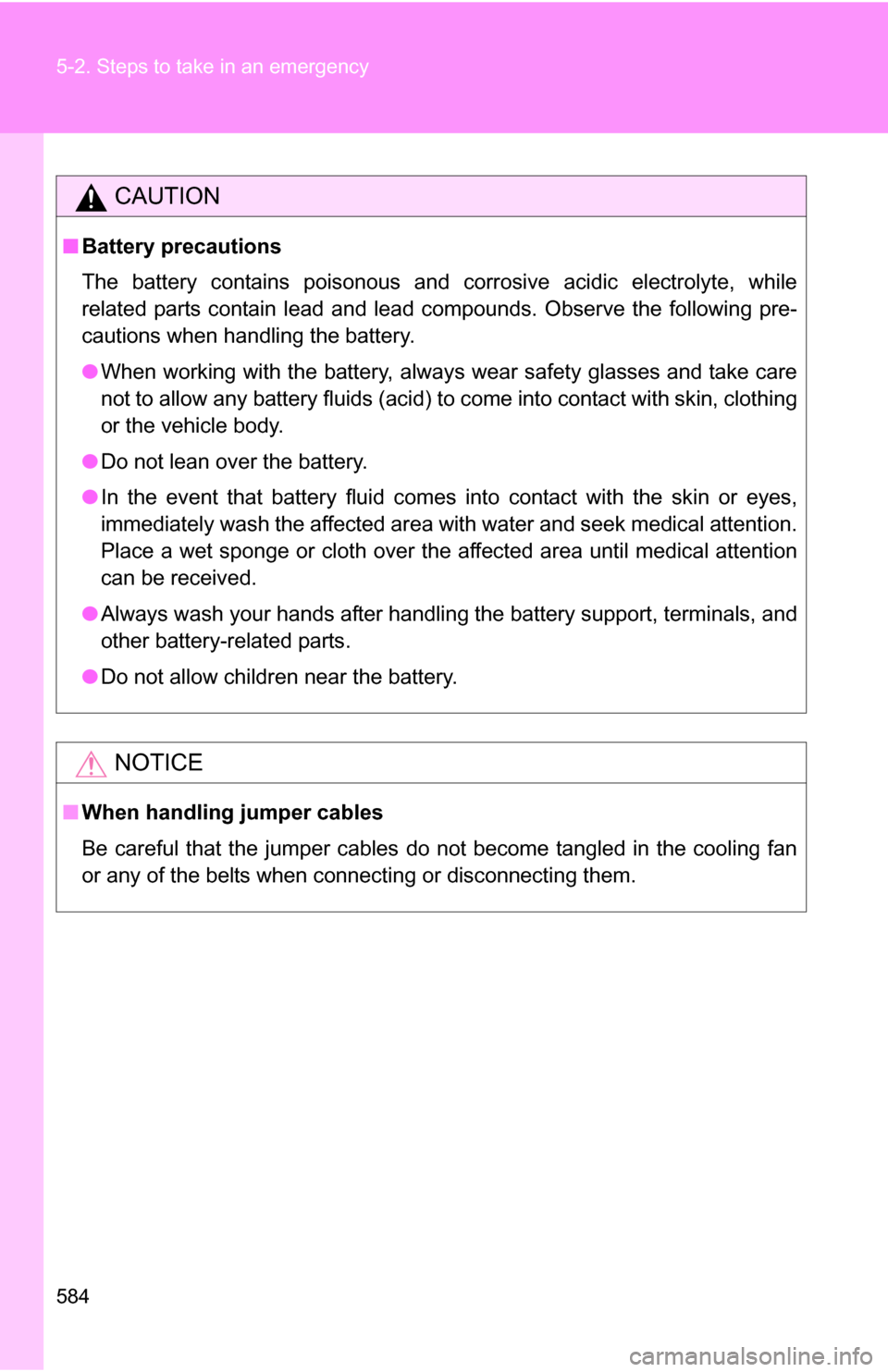
584 5-2. Steps to take in an emergency
CAUTION
■Battery precautions
The battery contains poisonous and corrosive acidic electrolyte, while
related parts contain lead and lead compounds. Observe the following pre-
cautions when handling the battery.
●When working with the battery, always wear safety glasses and take care
not to allow any battery fluids (acid) to come into contact with skin, clothing
or the vehicle body.
● Do not lean over the battery.
● In the event that battery fluid comes into contact with the skin or eyes,
immediately wash the affected area with water and seek medical attention.
Place a wet sponge or cloth over the affected area until medical attention
can be received.
● Always wash your hands after handling the battery support, terminals, and
other battery-related parts.
● Do not allow children near the battery.
NOTICE
■When handling jumper cables
Be careful that the jumper cables do not become tangled in the cooling fan
or any of the belts when connecting or disconnecting them.
Page 585 of 672
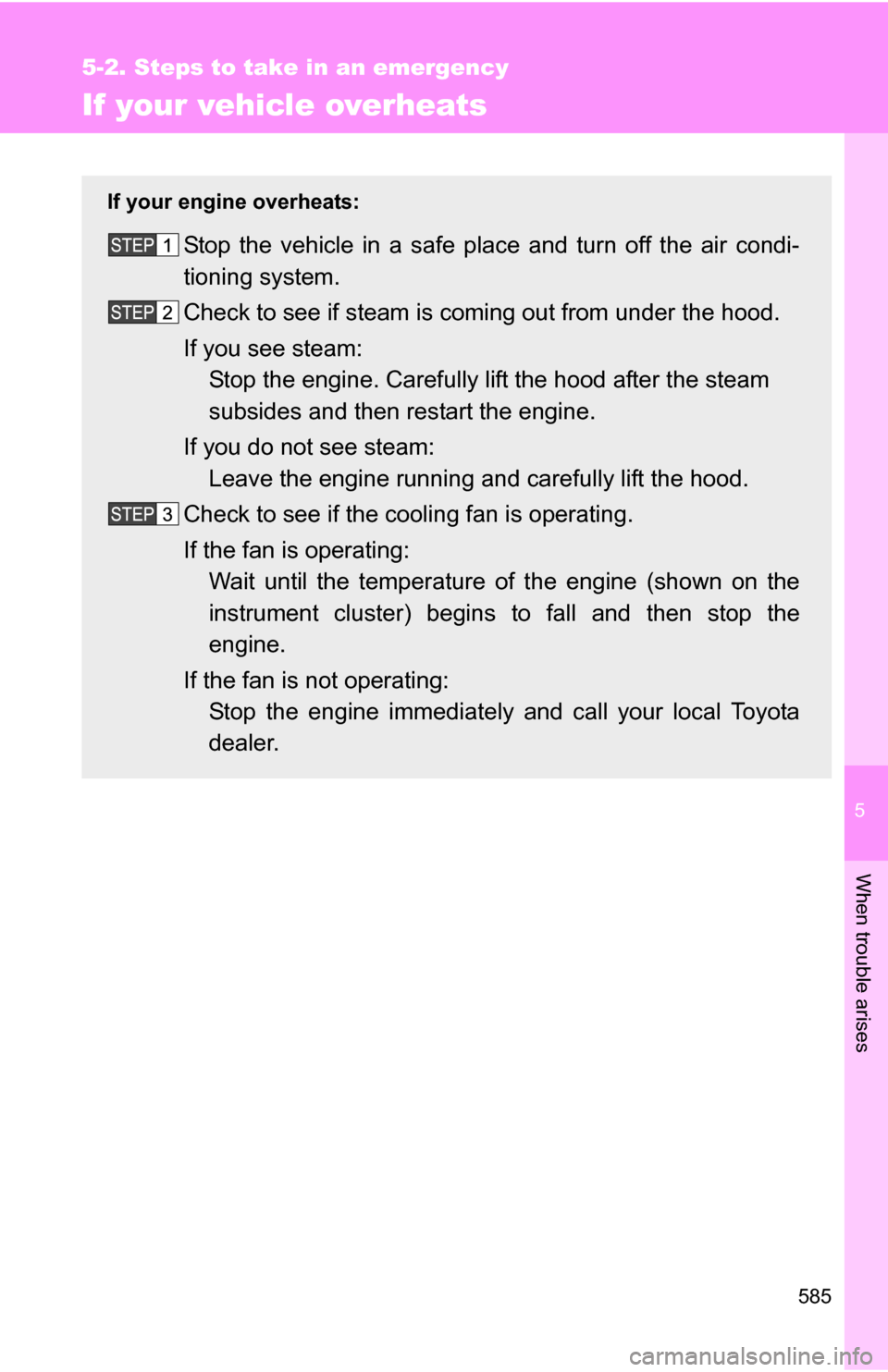
5
When trouble arises
585
5-2. Steps to take in an emergency
If your vehicle overheats
If your engine overheats:
Stop the vehicle in a safe place and turn off the air condi-
tioning system.
Check to see if steam is coming out from under the hood.
If you see steam: Stop the engine. Carefully lift the hood after the steam
subsides and then restart the engine.
If you do not see steam: Leave the engine running and carefully lift the hood.
Check to see if the cooling fan is operating.
If the fan is operating: Wait until the temperature of the engine (shown on the
instrument cluster) begins to fall and then stop the
engine.
If the fan is not operating: Stop the engine immediately and call your local Toyota
dealer.
Page 609 of 672
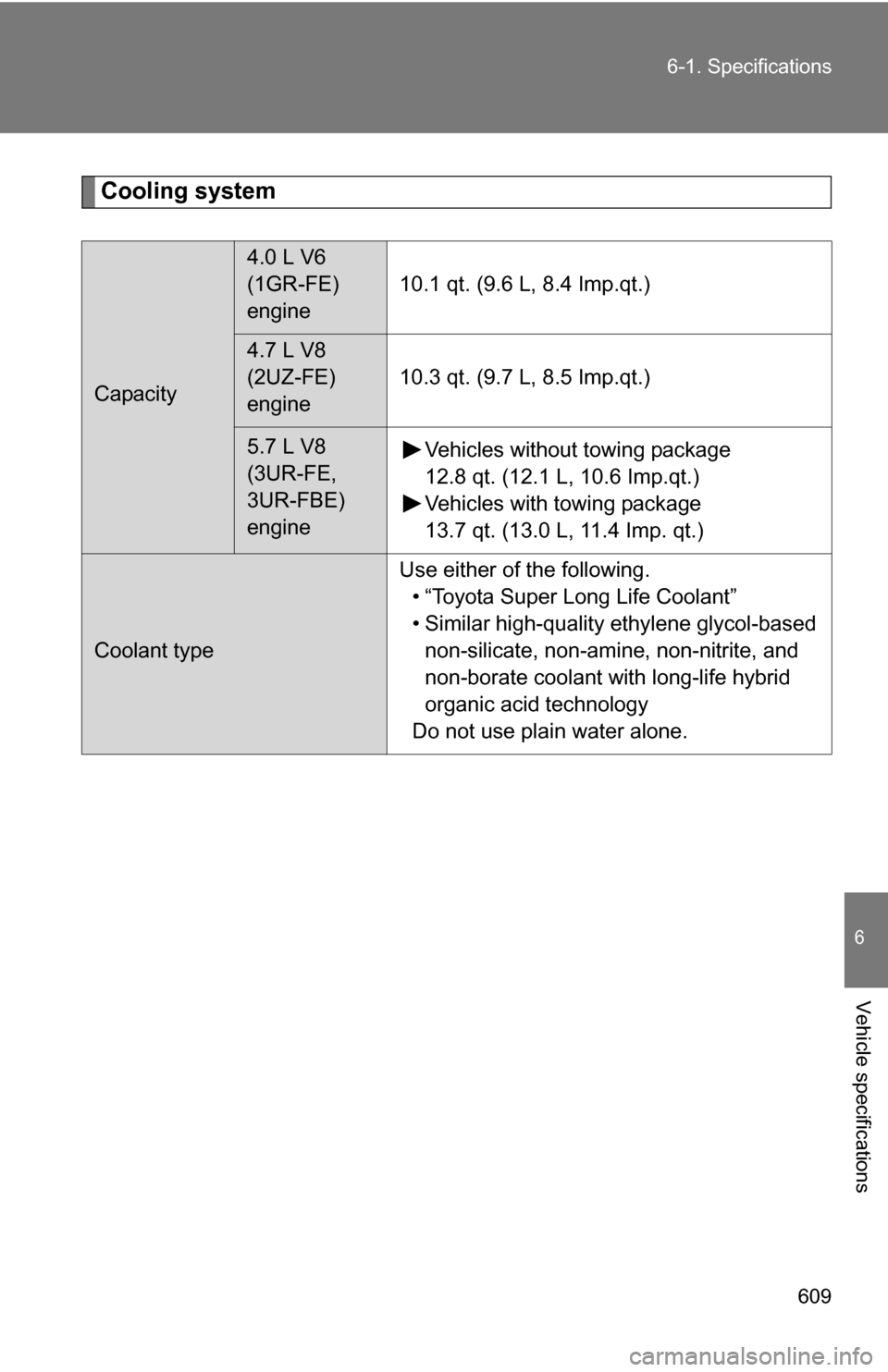
609
6-1. Specifications
6
Vehicle specifications
Cooling system
Capacity
4.0 L V6
(1GR-FE)
engine
10.1 qt. (9.6 L, 8.4 Imp.qt.)
4.7 L V8
(2UZ-FE)
engine10.3 qt. (9.7 L, 8.5 Imp.qt.)
5.7 L V8
(3UR-FE,
3UR-FBE)
engine Vehicles without towing package
12.8 qt. (12.1 L, 10.6 Imp.qt.)
Vehicles with towing package
13.7 qt. (13.0 L, 11.4 Imp. qt.)
Coolant type Use either of the following.
• “Toyota Super Long Life Coolant”
• Similar high-quality ethylene glycol-based non-silicate, non-amine, non-nitrite, and
non-borate coolant with long-life hybrid
organic acid technology
Do not use plain water alone.
Page 657 of 672
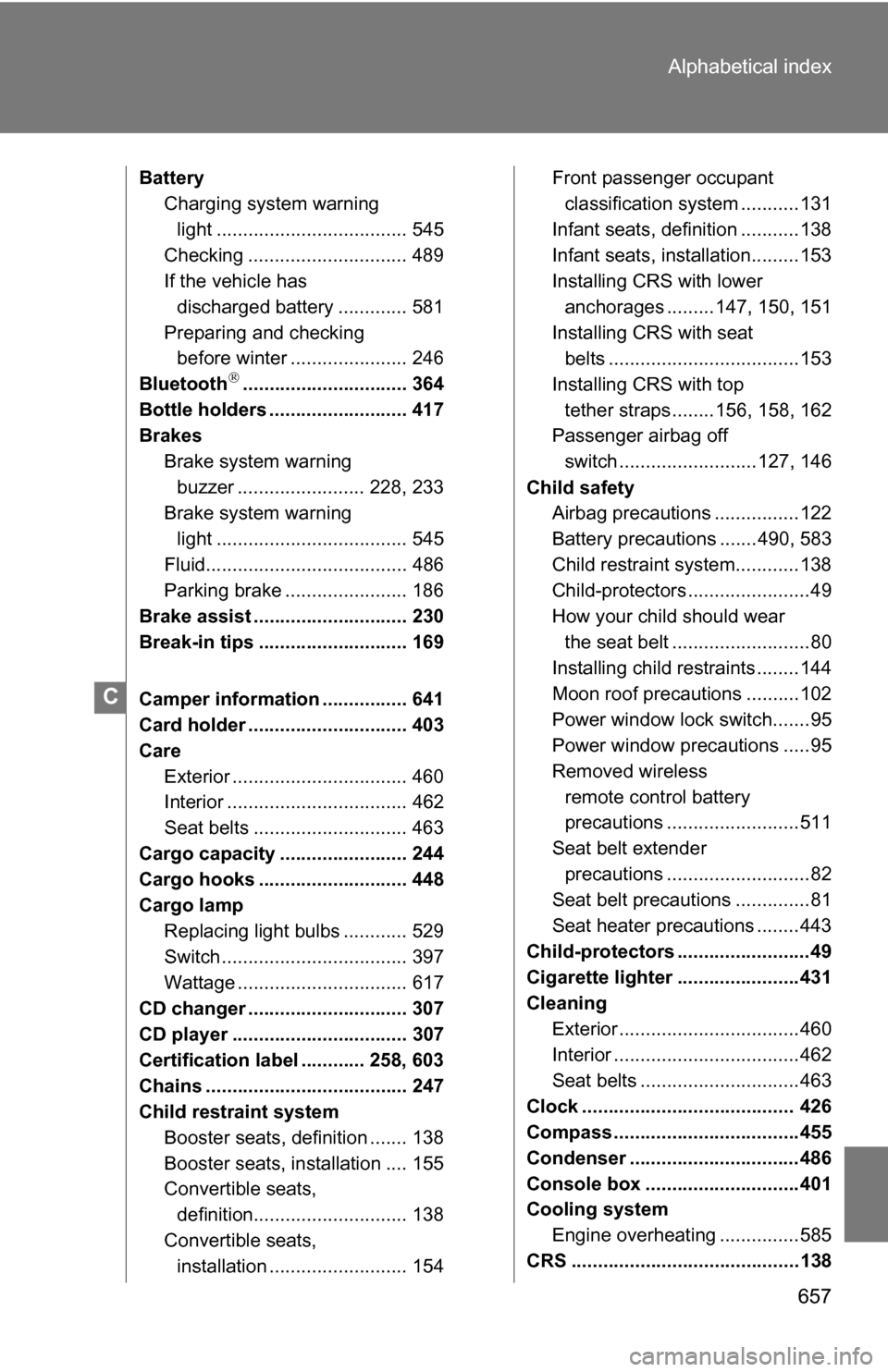
657
Alphabetical index
Battery
Charging system warning
light .................................... 545
Checking .............................. 489
If the vehicle has discharged battery ............. 581
Preparing and checking before winter ...................... 246
Bluetooth
............................... 364
Bottle holders .......................... 417
Brakes Brake system warning buzzer ........................ 228, 233
Brake system warning
light .................................... 545
Fluid...................................... 486
Parking brake ....................... 186
Brake assist ............................. 230
Break-in tips ............................ 169
Camper information ................ 641
Card holder .............................. 403
Care Exterior ................................. 460
Interior .................................. 462
Seat belts ............................. 463
Cargo capacity ........................ 244
Cargo hooks ............................ 448
Cargo lamp Replacing light bulbs ............ 529
Switch ................................... 397
Wattage ................................ 617
CD changer .............................. 307
CD player ................................. 307
Certification label ............ 258, 603
Chains ...................................... 247
Child restraint system Booster seats, definition ....... 138
Booster seats, installation .... 155
Convertible seats, definition............................. 138
Convertible seats, installation .......................... 154 Front passenger occupant
classification system ........... 131
Infant seats, definition ...........138
Infant seats, installation.........153
Installing CRS with lower anchorages .........147, 150, 151
Installing CRS with seat belts ....................................153
Installing CRS with top tether straps ........156, 158, 162
Passenger airbag off
switch .......................... 127, 146
Child safety Airbag precautions ................122
Battery precautions .......490, 583
Child restraint system............138
Child-protectors .......................49
How your child should wear
the seat belt ..........................80
Installing child restraints ........144
Moon roof precautions ..........102
Power window lock switch.......95
Power window precautions .....95
Removed wireless
remote control battery
precautions .........................511
Seat belt extender precautions ...........................82
Seat belt precautions ..............81
Seat heater precautions ........443
Child-protectors .........................49
Cigarette lighter .......................431
Cleaning Exterior ..................................460
Interior ...................................462
Seat belts ..............................463
Clock ........................................ 426
Compass ...................................455
Condenser ................................486
Console box .............................401
Cooling system Engine overheating ...............585
CRS ...........................................138
C